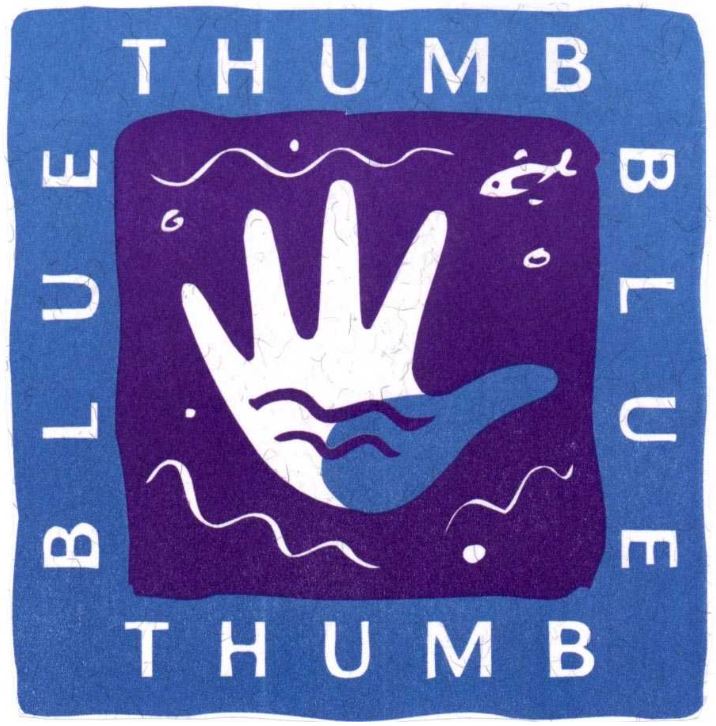Protect the Illinois River from Nutrient Pollution
Familiar Stories…
- A family goes out for a late summer day of fishing on the Lake Tenkiller. They
 catch fish but notice the water is very green and murky.
catch fish but notice the water is very green and murky. - A rancher goes out to fish on the pasture pond he stocked a few years ago. He finds it clogged with waterweeds and hard to fish.
- A fly fisher tries her luck on the Illinois River. It’s hard to wade because the rocks are fuzzy green and slippery, and there aren’t as many Brownies (Smallmouth Bass) as before.
- A Tulsa resident turns on the tap and finds the water has an unpleasant muddy taste and odor.
Q: What do these stories have in common?
A: They are examples of excess algae and other aquatic plants due to nutrient pollution.
Algae and aquatic plants are not usually bad. But too much algae, particularly some species, can cause serious problems.
Algae and aquatic plants are generally good because they form the base of the aquatic food chain, provide habitat for fish and other critters, and produce oxygen. Critters that feed on algae become food for gamefish and other desirable wildlife. Larger aquatic plants provide feeding and nesting cover for many species.
Problems occur when fertilizer nutrients cause too much growth of algae. This condition is called, eutrophication.
Free-floating, microscopic algae, called phytoplankton, are always present in lakes and streams. They give the water an olive greenish cast. Attached algae, called periphyton, give a green color to rocks and other structures submerged in the water.

Figure 1. There are many types of microscopic algae. (courtesy, NRCS)
What occurs in Eutrophication?
- Dense clumps of algae appear in the water or attached to rocks. The water may become green and cloudy (turbid).
- The types of algae change from desirable species to less desirable species. These species make poor food for aquatic life and impart bad taste and odor to the water and fish.
- Fish populations change: turbidity favors rough fish over sight-feeding gamefish. Too much aquatic plant cover favors the smaller fish.
- Die-off and rapid decomposition of algae causes depletion of oxygen, resulting in fish kills.
- Decaying plants and algae, and excess growth of off-flavor algae make drinking water expensive to treat.

Figure 2. Excessive algae may look like moss, clumps or floating mats.
What are these fertilizer nutrients?
- Nitrogen (N) occurs mostly as nitrates and ammonia, and organic N.
- Phosphorus (P) occurs mostly as phosphates.
- These nutrients stimulate growth of all plants – houseplants, crops, weeds and algae.
- It makes no difference whether N and P come from fertilizer, manure, or even the decay of lawn and garden trimmings. When they get in the water, they stimulate the growth of algae.
Why do we hear so much about phosphorus?
- Phosphorus is a special problem in the Illinois River and other fresh waters.
- Fresh waters are naturally low in P, whereas N tends to be more abundant.
- Tiny additions of P can cause a huge response in algae growth.
How do nutrients get in the water?
- Point sources are discharges from a pipe or man-made channel (municipal sewage treatment plants, food processing plants, or other industrial sources). Point sources account for about 40% of excess nutrients in the Illinois River.
- Non-point sources are not related to an identified point-source discharge. They are
carried off the land or into groundwater by rainfall runoff and infiltration. Nonpoint
sources include:
- Home septic systems
- Animal manures from livestock (even pets)
- Fertilizers from pastures, crops, lawns, gardens
How can we prevent nutrient pollution?
Be an active urban citizen:
- Support improved waste treatment by your city or town. Demand strict compliance with regulations of the Oklahoma Dept. of Environmental Quality and EPA.
- Clean up after your pets.
- Test your lawn and garden soil, and follow fertilizer recommendations. Never apply more fertilizer than needed, and keep it off the pavement.
- Urban/home uses of fertilizers are often at higher application rates per acre than farm use!
Be a responsible rural neighbor:
- Install and maintain your septic system. Pump your tank regularly!
- Livestock and poultry producers - follow your Animal Waste Management Plan (AWMP) or Pollution Prevention Plan (P3).
- Farmers and ranchers - follow your Comprehensive Nutrient Management Plan (CNMP) for crops and pastures.
- Soil test farm fields before applying manure or fertilizer. Additional P may not be needed, if fields have been fertilized regularly.
- Manage farm fields to prevent erosion (sediment carries phosphorus!).
Where can I get help?
- County Conservation Districts (CCD) and their affiliated Natural Resources Conservation
 Service (NRCS): technical help, AWMPs, CNMPs, and information on cost sharing. Look
for the CCD under your county phone listings.
Service (NRCS): technical help, AWMPs, CNMPs, and information on cost sharing. Look
for the CCD under your county phone listings. - County OSU Cooperative Extension Service: soil testing, fertilizer and animal waste recommendations, and information on septic tank maintenance.
- Oklahoma Dept. of Environmental Quality (DEQ): information on septic system installation and maintenance. Phone 1-800-0206.
- Oklahoma Blue Thumb Program: volunteer opportunities for people to join stream teams, monitor local waterways, and help educate the public about nutrients and other water quality issues. Call 918-280-1598.
